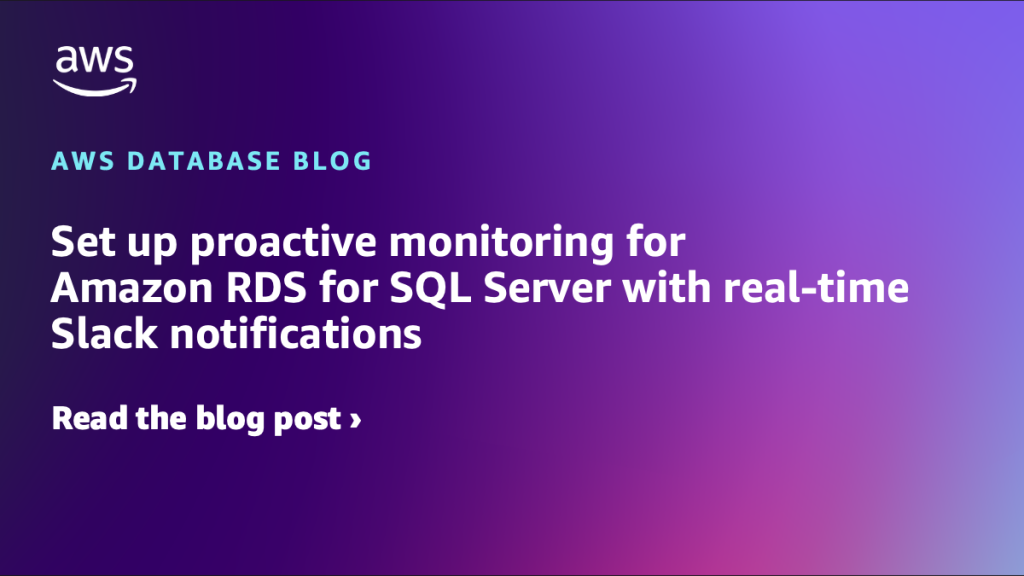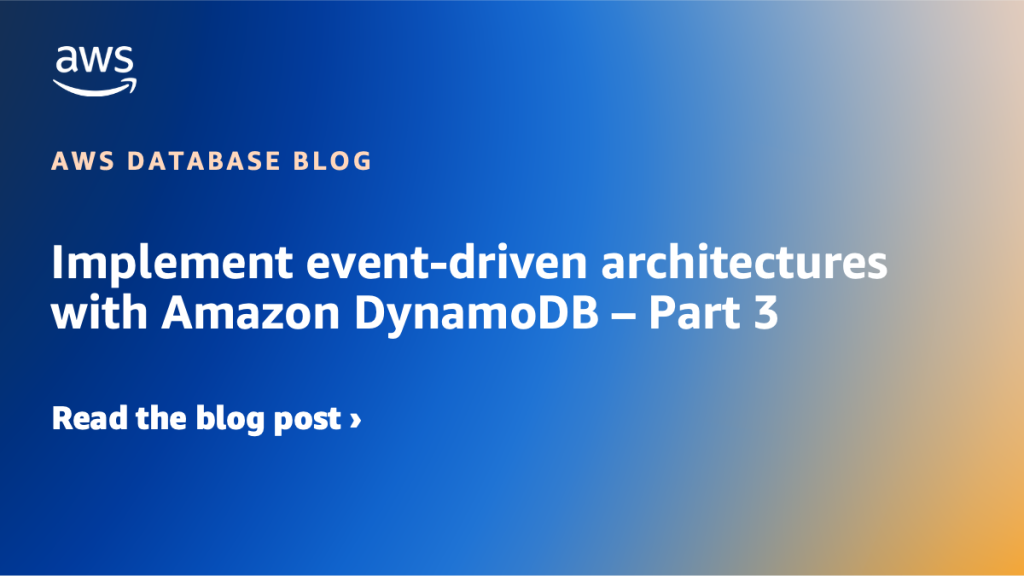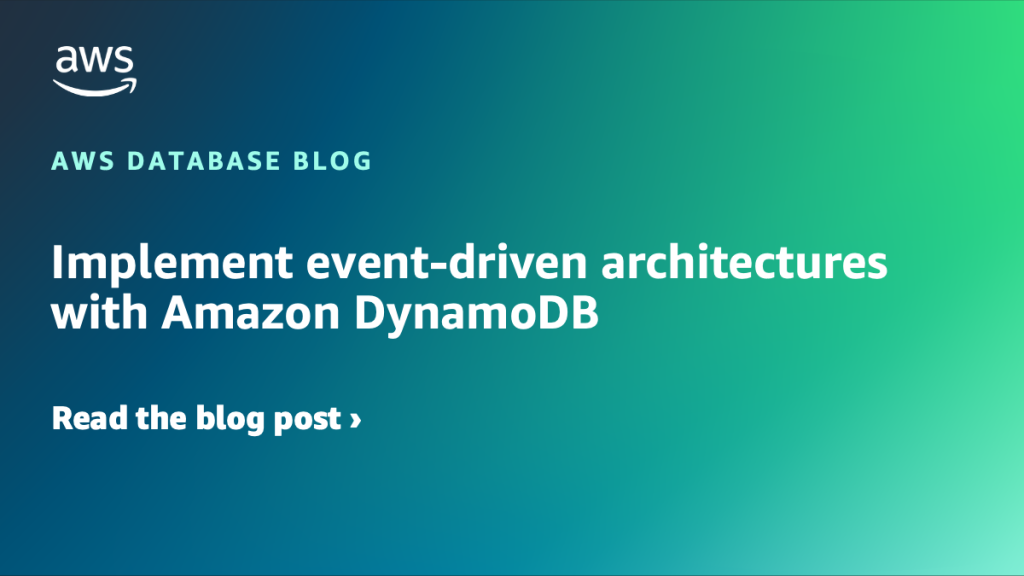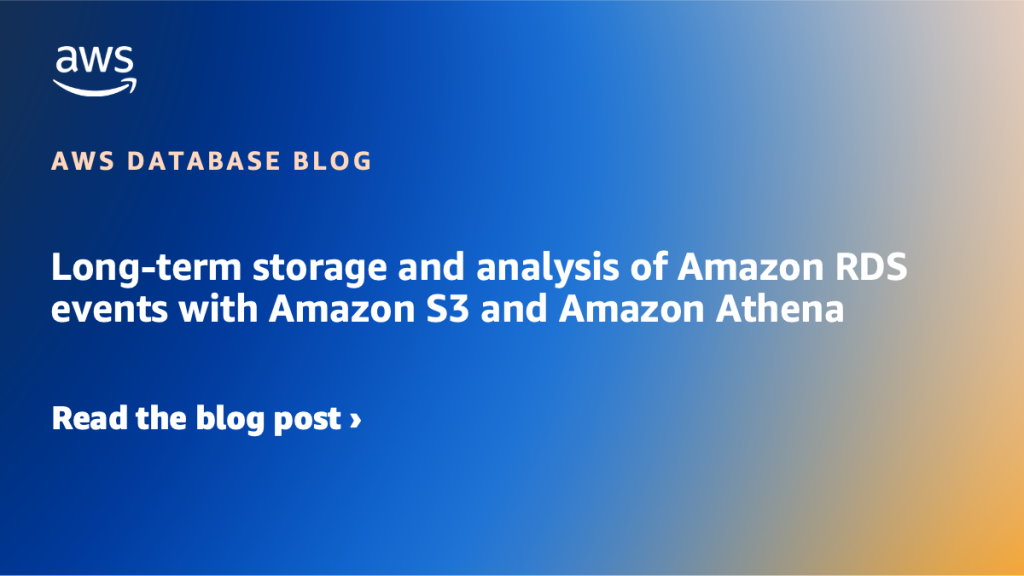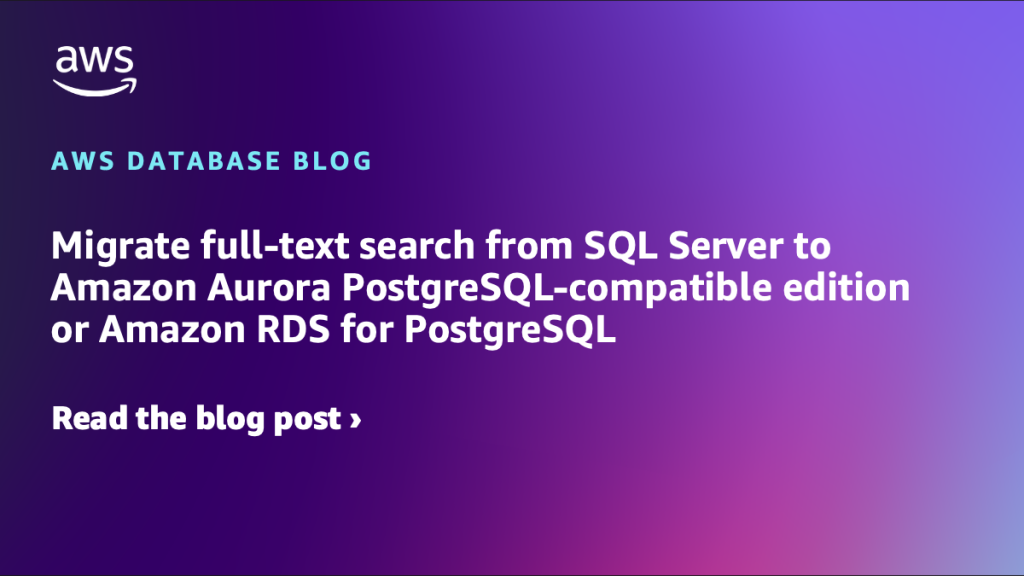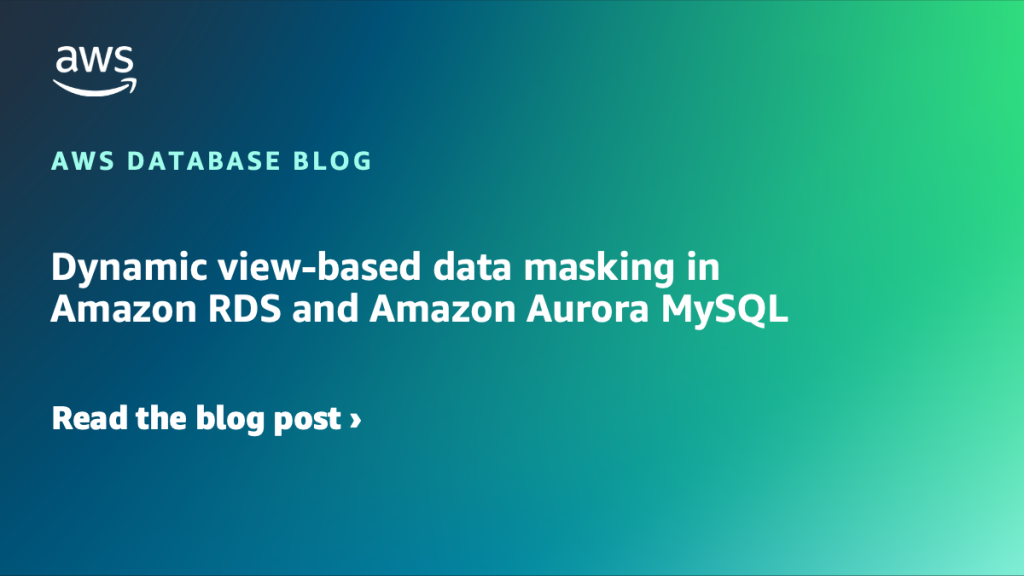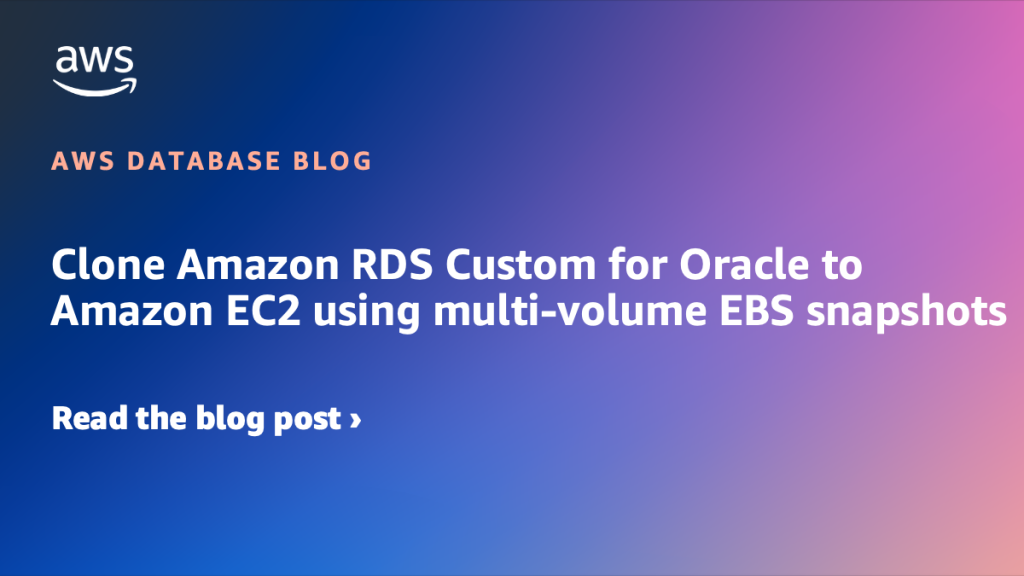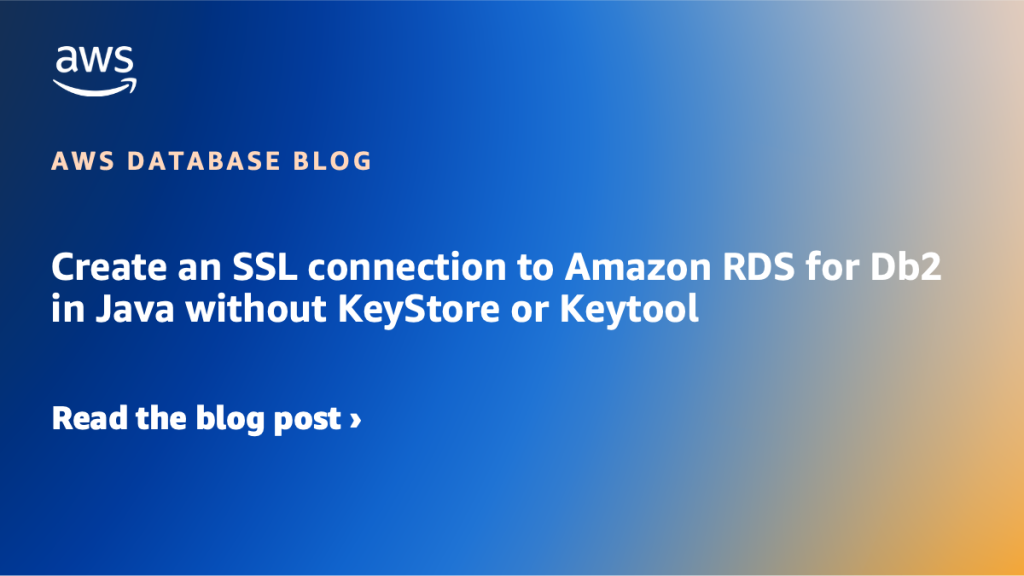AWS Database Blog
Category: Advanced (300)
Set up proactive monitoring for Amazon RDS for SQL Server with real-time Slack notifications
In this post, we demonstrate how to build an efficient, serverless monitoring system for Amazon RDS for SQL Server using AWS native services and Slack integration.
Identifying and resolving performance issues caused by TOAST OID contention in Amazon Aurora PostgreSQL Compatible Edition and Amazon RDS for PostgreSQL
In this post, we explore the challenges of OID exhaustion in PostgreSQL, focusing on its impact on TOAST tables and how it leads to performance issues. We will cover how to identify the problem by reviewing wait events, session activity, and table usage. Additionally, we discuss practical solutions, from cleaning up data to more advanced strategies such as partitioning.
Implement event-driven architectures with Amazon DynamoDB – Part 3
In this three-part series, we explore approaches to implement enhanced event-driven patterns for DynamoDB-backed applications. Throughout this series, we’ve examined various strategies for managing data within DynamoDB. This post shifts the focus to an event-driven pattern that reliably schedules future downstream actions using EventBridge Scheduler.
Implement event-driven architectures with Amazon DynamoDB – Part 2
In this three-part series, we explore approaches to implement enhanced event-driven patterns for DynamoDB-backed applications. In this post (Part 2), we explore another method which uses global secondary indexes (GSIs) to handle fine-grained Time to Live (TTL) requirements.
Implement event-driven architectures with Amazon DynamoDB
In this three-part series, we explore approaches to implement enhanced event-driven patterns for DynamoDB-backed applications. In this post (Part 1), we focus on improving DynamoDB’s native TTL functionality by implementing near real-time data eviction using EventBridge Scheduler, reducing the typical time to delete expired items from within a few days to less than one minute.
Long-term storage and analysis of Amazon RDS events with Amazon S3 and Amazon Athena
In this post, we show you how to implement an automated solution for archiving Amazon RDS events to Amazon Simple Storage Service (Amazon S3). We also discuss how to analyze the events with Amazon Athena which helps enable proactive database management, helps maintain security and compliance, and provides valuable insights for capacity planning and troubleshooting.
Migrate full-text search from SQL Server to Amazon Aurora PostgreSQL-compatible edition or Amazon RDS for PostgreSQL
In this post, we show you how to migrate full-text search in Microsoft SQL Server to Amazon Aurora PostgreSQL using text searching data types tsvector and tsquery. We also show you how to implement FTS using pg_trgm and pg_bigm extensions.
Dynamic view-based data masking in Amazon RDS and Amazon Aurora MySQL
Data masking is an important technique in cybersecurity, allowing organizations to safeguard personally identifiable information (PII) and other confidential data, while maintaining its utility for development, testing, and analytics purposes. Data masking involves replacing original sensitive data with false, yet realistic information. This process helps ensure that the masked version preserves the format and characteristics […]
Clone Amazon RDS Custom for Oracle to Amazon EC2 using multi-volume EBS snapshots
In this post, we walk you through the process of cloning an Amazon RDS Custom for Oracle database to an EC2 instance using multi-volume Amazon Elastic Block Store (Amazon EBS) snapshots for storage replication. This approach is useful for setting up a disaster recovery (DR) environment in a Region where RDS Custom is not yet available.
Create an SSL connection to Amazon RDS for Db2 in Java without KeyStore or Keytool
In this post, we show you a straightforward approach to connect to a Db2 database using SSL in Java, without needing a trust store or invoking keytool.
